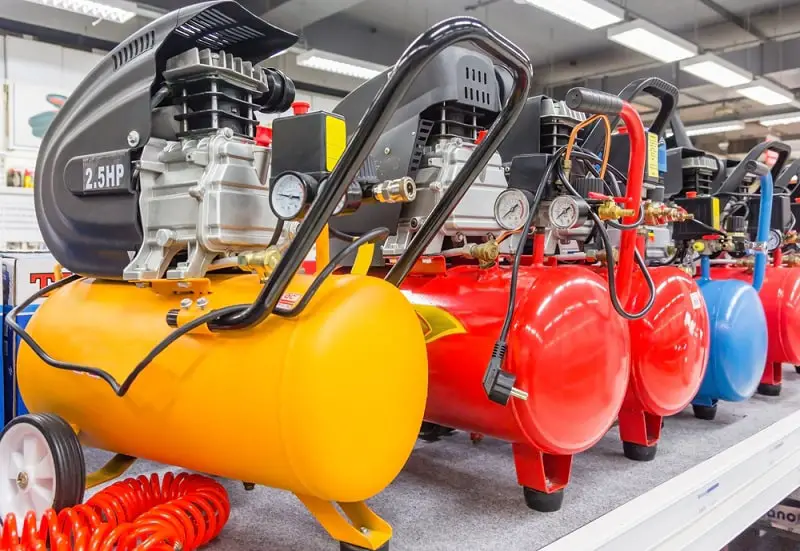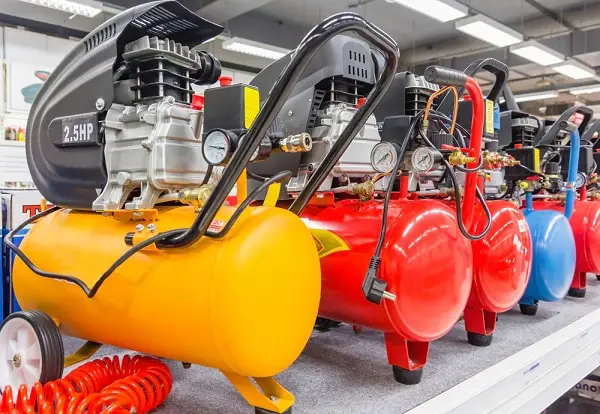
What is an Air Compressor?
An air compressor is a common device that can be found in many workshops and uses mechanical power typically from a gas or electric motor to pull air from the surrounding atmosphere, then pressurizes the air creating potential energy to be used for power tools. The compressed air can be stored for later use in a pressurized air tank or it can be transferred directly via pipes or tubes to a point of use.
There are different types of compressors. Each type may have different parts and may require certain maintenance depending on whether you have one that uses oil or one that is oil-free, or if you’re using a compressor with a tank or one that is tankless.
Typically, Compressors fit into two categories; Positive-displacement air compressors and Dynamic displacement air compressors. Most compressors use positive displacement to pressurize the air that they pull from the atmosphere because they allow for more variable loads whereas dynamic displacement is meant for a baseload but offers more airflow to be pressurized.
There are two kinds of compressors that use positive displacement, ether reciprocating compressors or rotary compressors. This classification is based on how exactly the device extracts and pressurizes the surrounding air.
In a reciprocating compressor, there is a housing with an internal piston connected to a crankshaft. When the crankshaft turns using the power from the motor, the piston moves up and down within the cylindrical housing.
There are two valves at the head of the cylinder that allows manipulation of airflow, they are the inlet and outlet valves. The outlet valve ether leads to second stage cylindrical housing area with another piston or it leads to the pressurized air tank
Reciprocating compressors can have multiple stages, or cylindrical housing, to allow for the pressurized air to cool while also increasing the PSI (pressure per square inch) for the compressor. Two-stage reciprocating compressors are what you would see in most small workshops.
Rotary vein compressors are made with veins that are on an off-center drive shaft powered by the motor. As the shaft rotates, the veins adjust to maintain contact with the compressor wall creating chambers of varying pressure until they reach an outlet valve located in the last chamber.
Rotary screw compressors use two helical screws that guide air into a chamber, whose volume is decreased as the screws turn. Rotary compressors don’t vibrate or heat up as much as their reciprocating counterparts do but they may also require more maintenance to insure optimum performance.
Many professionals and hobbyists know the value of having a good air compressor in their toolkit. This device can turn any project from a dreaded experience into an easy job. Now that you have a basic understanding of air compressors, you can pick the right one for any future project you might have.
Related Video:

